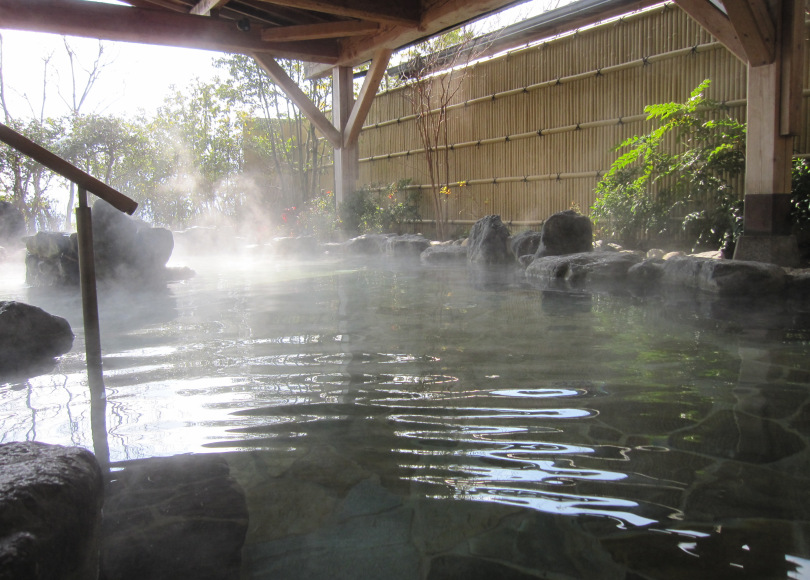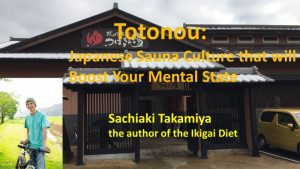Totonou: A Japanese Buzzword in 2021
I got my manuscript back from the editor yesterday and I am checking it now.

On Saturday, I went to a hot spring facility nearby. One thing I love about Japan is that there are hot springs everywhere, and I think this is one factor of our long life. Having a bath in a natural spring has tremendous health benefits; it boosts blood circulation, reduces stress and promotes sleep, relieves pain, and heals skin problems. The reason I went there this time, however, was not to have a bath.
I went there to have a sauna. If you read my last post, you know that I had a sauna there during my 48 hours fast last Tuesday. But what I realized, later on, was that I didn’t have the sauna properly. I didn’t do TOTONOU. So, I went there again to try doing TOTONOU.
What is TOTONOU?
I’ll talk about it in a minute, but before that, let me tell you that I was getting interested in sauna before discovering TOTONOU.
David Sinclair has talked about sauna and cold baths in his new podcast program.
Of course, I knew about the hormetic benefits of sauna and cold baths before, David Sinclair discussed it in his book, which I read a year ago, and many other people talk about it now. Joe Rogan showed himself having an ice bath in his podcast a few months ago.
Yet, I was busy with other things such as intermittent fasting, mountain climbing, shrine step HIIT and so on, and didn’t get around to paying attention to sauna that much. And finally, I have a little space in my mind to think of sauna. Last Tuesday, I wanted to test the effect of alternating a sauna and cold bath. So, I did the three sets of them.
Then, when I was searching about sauna I came across TOTONOU and how TOTONOU was nominated as a candidate for the top 10 buzzwords of the year in 2021.
Totonou in Japanese means to be set, or be conditioned, or be organized. It is usually used in the context of a room or a hairstyle. Heya ga totonou means the room is cleaned up and it is tidy now. Kami ga totonou means the hair is combed and is set now. But now, this word is used in sauna culture.
Totonou in the Japanese sauna culture means to feel integrated after having a sauna, cold bath, and rest at an outdoor reclining chair. Apparently, this is how people have a sauna in Finland except that they jump into a cold lake over there, and this is the Japanese version of it. We have a cold bath with about 15 to 16 degrees centigrade, and the bathtub is located right next to the sauna room.
As I said before, there are hot springs everywhere in Japan, and usually, a hot spring facility has a sauna room and a cold bathtub. Because of this even though sauna is not part of our culture, many people end up having a sauna when we go to Onsen. I have had a sauna so many times in my life but I just had a sauna without getting into a cold bath. I didn’t go there to have a sauna, my primal purpose was to have baths. I usually tried five or six kinds of baths and had a sauna just once. I didn’t have time to have a sauna three times. l think that is the typical way of spending our time at a hot spring facility.
That’s what I thought.
However now, sauna is a big boom in Japan and people started having a sauna in the Scandinavian way: having a sauna, cold bath, and open-air bathing. You repeat the process three times.
12 million people have a sauna once a month, and 2.5 million people go to sauna two or three times a week. People who have a sauna regularly are called saunars. Well, we don’t have singular or plural in Japanese so we just call them saunar. There even was a TV drama about this sauna culture and TOTONOU.
TOTONOU didn’t get into the top 10 buzzwords but it certainly is popular in Japan.
On Tuesday, I didn’t do the final act in TOTONOU that is to rest outside on a chair. I rested by having a hot bath. So, on Saturday, I went there again to try resting outside on a reclining chair after having a sauna and cold bath.
The Ikigai Diet: The Secret Japanese Diet to Health and Longevity
POD Paperback
https://www.amazon.com/gp/product/4991064864
Kindle

